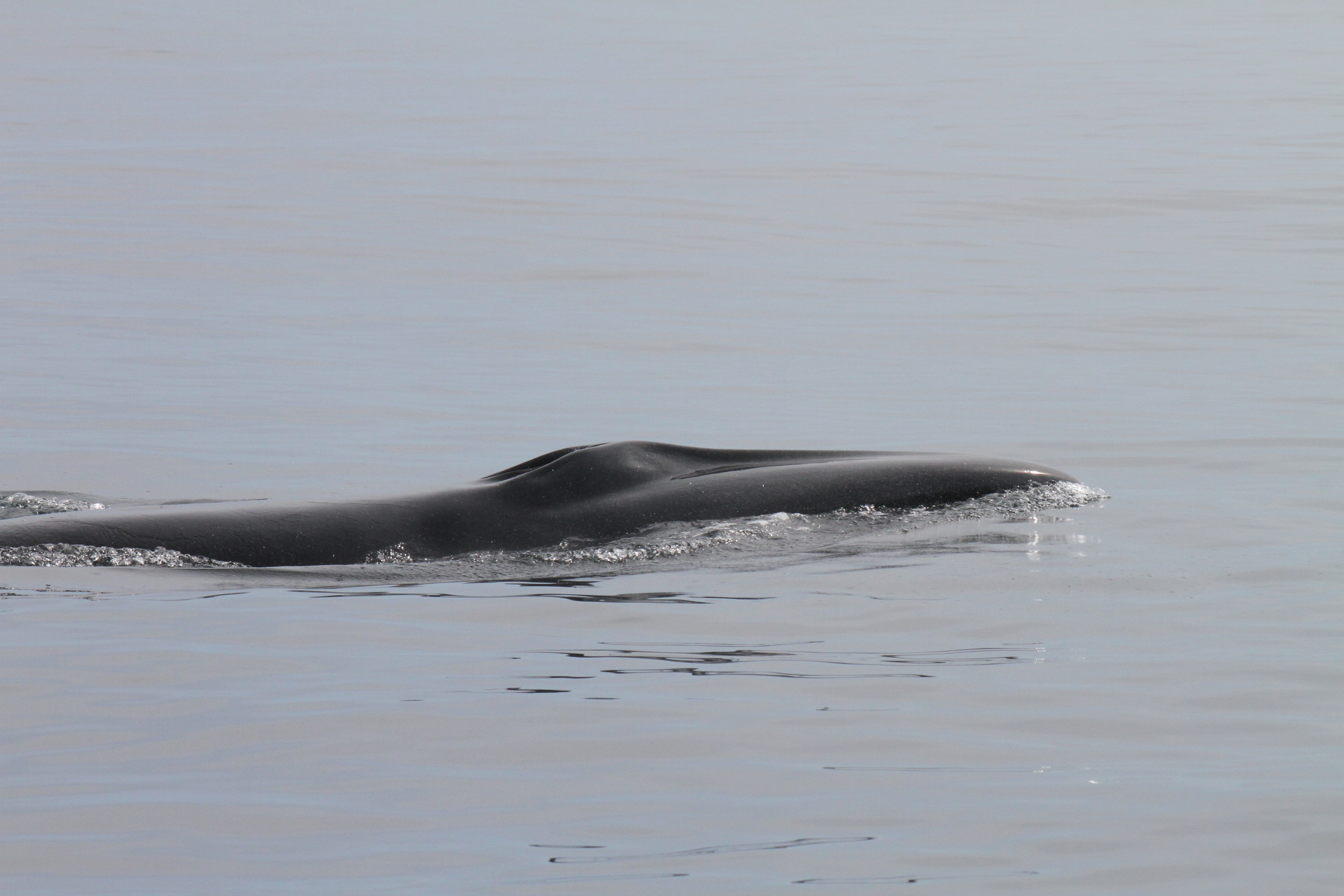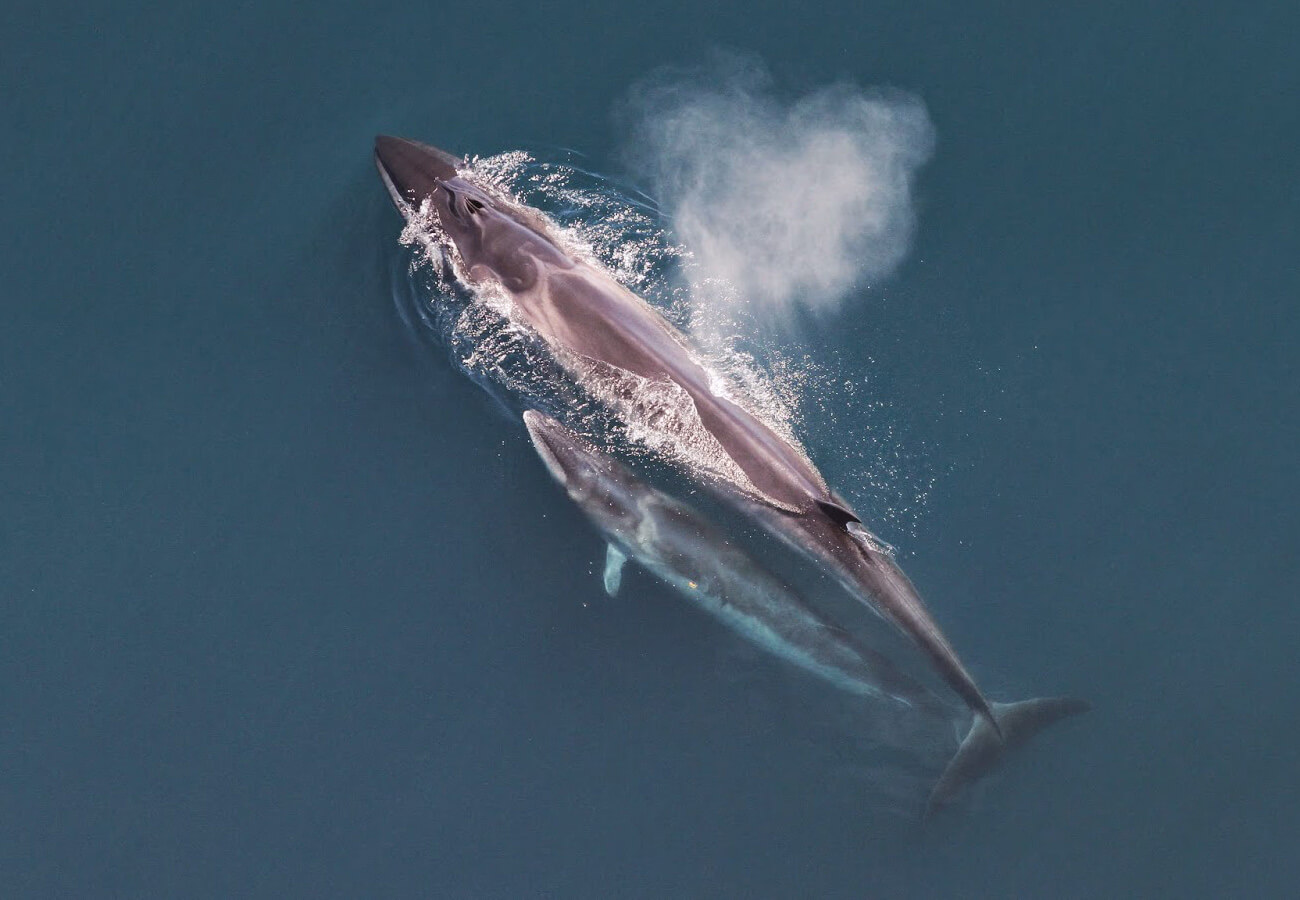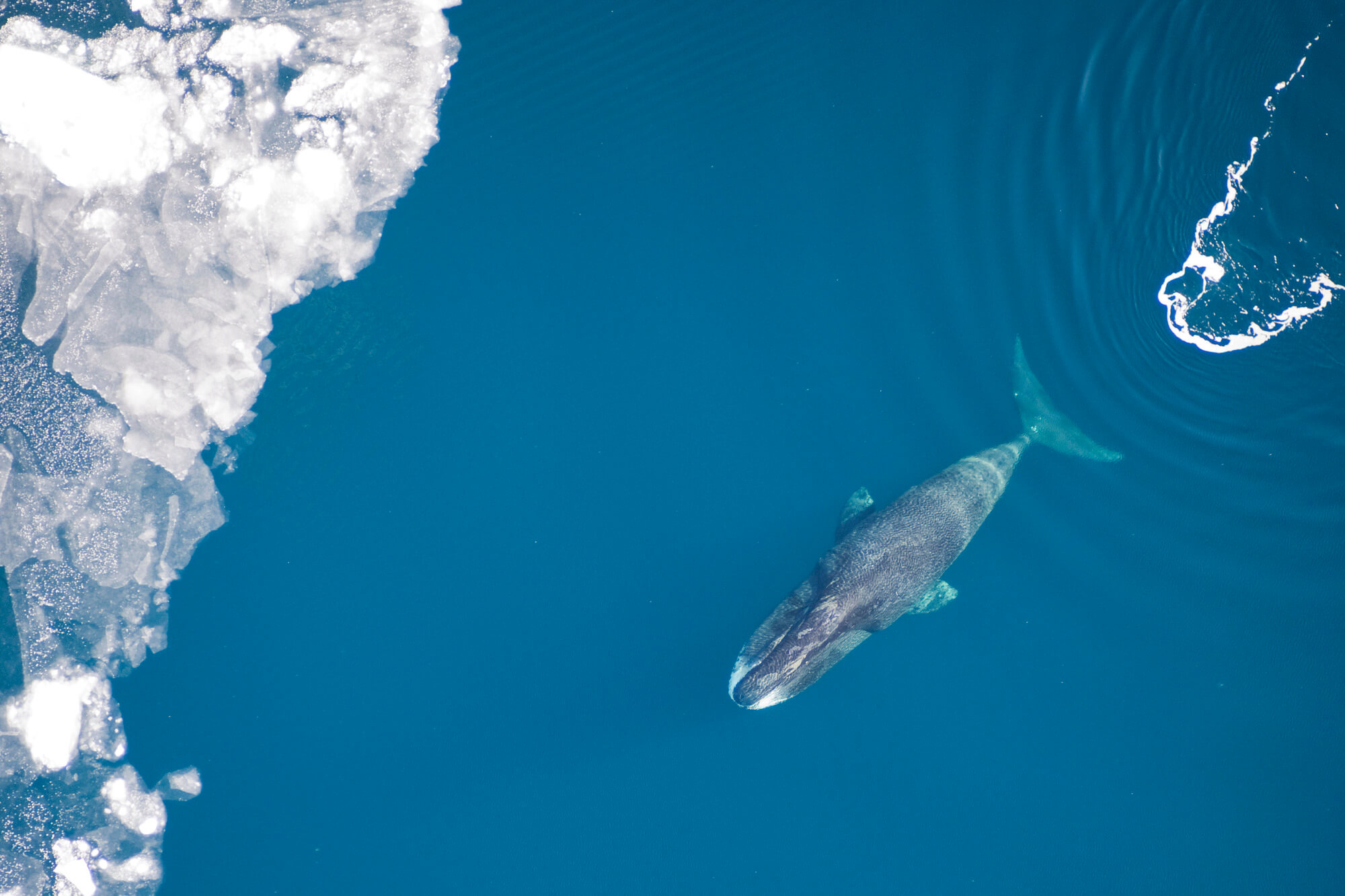Despite their similar names in French, the sei whale and the bowhead whale are two very distinct species! To eliminate any confusion, we have taken the time to describe what differentiates these two species.
Remarkably different!
Morphologically, the sei whale is very streamlined, while the bowhead whale is rather round and plump. In and of itself, this is already a striking difference. Another feature that distinguishes the bowhead whale from the sei whale is that the bowhead lacks a dorsal fin. Indeed, the sei whale has a hook-shaped dorsal fin located toward the rear of its body.
In addition to their appearance, these two species do not frequent the same waters either: the bowhead whale inhabits the Arctic while the sei whale’s range covers all of the world’s oceans with the exception of waters that are prone to heavy ice cover.
But that’s not all. Whether we’re talking about their spouts, size or even longevity, the differences between sei and bowhead whales are many!
Sei whale
- Global population: 80,000 individuals
- Dive time: 13 minutes
- Life expectancy: 60 years
- Weight: 16-27 tonnes (north); 22-38 tonnes (south)
- Length: 12-16 metres (north); 13-17 metres (south)
- Scientific name: Balaenoptera borealis
The English name for the species is derived from the Norwegian word “sejhval.” This name is a reminder that the whale (hval) arrives in Norwegian waters during its migration at the same time as a particular species of fish (seje). Reading this definition, we realize that it is only in French that the names of the species cause confusion!
As its scientific name indicates, the sei whale belongs to the genus Balaenoptera, which also includes the minke whale, fin whale and blue whale. The sei whale is physically similar to the fin whale, but is much smaller in size and its jaw is monotone. Its chevron (the colour pattern on its back) is also U-shaped rather than V-shaped like that of the fin whale.
Although it does not frequent Quebec waters, the sei whale can be found in other parts of Canada, including off the coasts of Newfoundland and Nova Scotia. From the tropics to the poles (north or south), it also frequents all the planet’s oceans during its seasonal migrations.
Sei whales are generally solitary, but may form small groups of two to five individuals on occasion. In areas where food is plentiful, it is not uncommon to see groups of several dozen individuals.
The sei whale is one of the fastest marine mammals, easily reaching speeds of up to 25 km/h! Nevertheless, it is endangered in the Atlantic, according to a COSEWIC assessment made in 2019. Ship strikes and underwater noise are believed to be the main threats to the species.
Bowhead whale
- Scientific name: Balaena mysticetus
- Length: 14 to 18 metres
- Weight: 60 to 90 tonnes
- Life expectancy: 50 to 75 years, and in some cases up to 100
- Dive time: 1 to 20 minutes
- Global population: 30,000 individuals
The bowhead whale is observed in the waters of the northern hemisphere, where it feeds on small crustaceans. It can be observed in particular in Nunavik (northern Quebec) and near Baffin Island (Nunavut). Frequenting regions of extreme cold, the bowhead whale is well adapted for braving sub-zero temperatures, including a layer of blubber up to 28 cm thick.
Being an arctic species, the bowhead whale (like the beluga) requires adaptations to be able to breathe at the surface even if the latter is covered in ice. Thanks to a protuberance on the top of its solid skull, the animal can break through ice up to 60 cm thick that would otherwise prevent it from breathing.
Often swimming alone, the bowhead whale can form small groups on occasion, especially in feeding areas. The bowhead whale is what scientists refer to as a “skimmer,” meaning it lets water and zooplankton enter its open mouth as it swims. Its baleen serves as a filter to let water out and keep prey in its mouth.
The species features baleen plates that can reach up to four metres long each, the longest of any whale. Thanks to its flexibility, whale baleen was once used to make corsets and umbrellas. Nearly 300 baleen plates are found on either side of the whale’s mouth. For comparison, the longest baleen of the sei whale measures 80 cm.
Like the sei whale, the bowhead whale has been heavily hunted in the past, so much so that certain populations have been designated “special concern” according to COSEWIC’s 2009 assessment.
Mysteries persist
Where do the French and scientific names of the sei whale come from if the species is absent from northern waters? And why does the English name of the bowhead whale make reference to the shape of its head, but the French name does not? Species nomenclature is a mysterious art, to say the least. However, notwithstanding their similar names in French, we quickly realize that the sei whale and the bowhead whale are not at all alike!
Learn more
- Carwardine, Mark (2022). Field Guide to Whales and Porpoises. Londres : Bloomsbury Wildlife, 288 p.
- Perrin, William F., Würsig, Bernd et Thewissen, J. G. M. (2009). Encyclopedia of Marine Mammals. Londres : Elsevier Inc., 1316 p.









